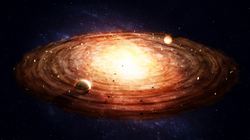From the first cosmic structures to the universe today
Over the last decades, knowledge of how the first cosmic structures were formed and evolved has improved as groundbreaking facilities provide observations of unprecedented precision. Moreover, sophisticated theoretical models allowed the building of accurate replicas for the real universe and testing new ideas about the impact of supernovae on galaxies. The comparison of observations with numerical simulations is crucial to improving our current understanding of galaxy formation within a hierarchical clustering scenario. The EU-funded project LACEGAL(opens in new window) (Latin American Chinese European galaxy formation network) brought together internationally recognised experts to address still open issues. Among other topics, LACEGAL covered the physical processes that are expected to regulate star formation over Hubble time and the impact of galaxy formation on the properties of the intergalactic and intercluster media. Another focus was on new knowledge on the very high-redshift universe and challenges posed by state-of-the-art numerical simulations. The ultimate aim was to assist European scientists to play a leading role in advancing our understanding of galaxy formation and modelling of cosmic structure growth. To this end, beyond Europe, the LACEGAL network established new collaborations with research centres in China and Latin America that host new exciting experiments. Over the four-year lifetime of the network, more than 100 secondments were supported among partners in China, Europe and Latin America. The findings of collaborative work were published in 35 papers and presented at numerous international conferences and workshops. Importantly, the LACEGAL network assisted European scientists in building long-lasting partnerships with scientists from across the world working on the numerical simulations of cosmic structure formation. One example of its success was the award of a Newton Fund grant to continue the scientific collaboration between partners in Chile and the United Kingdom.





